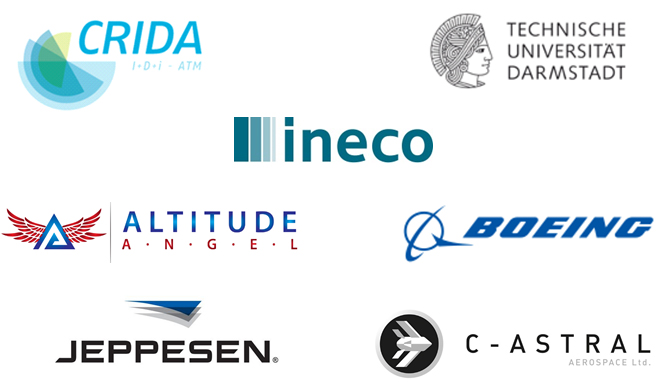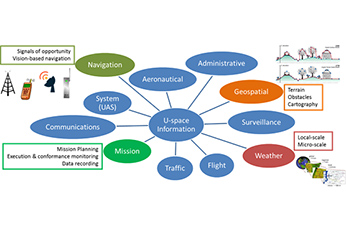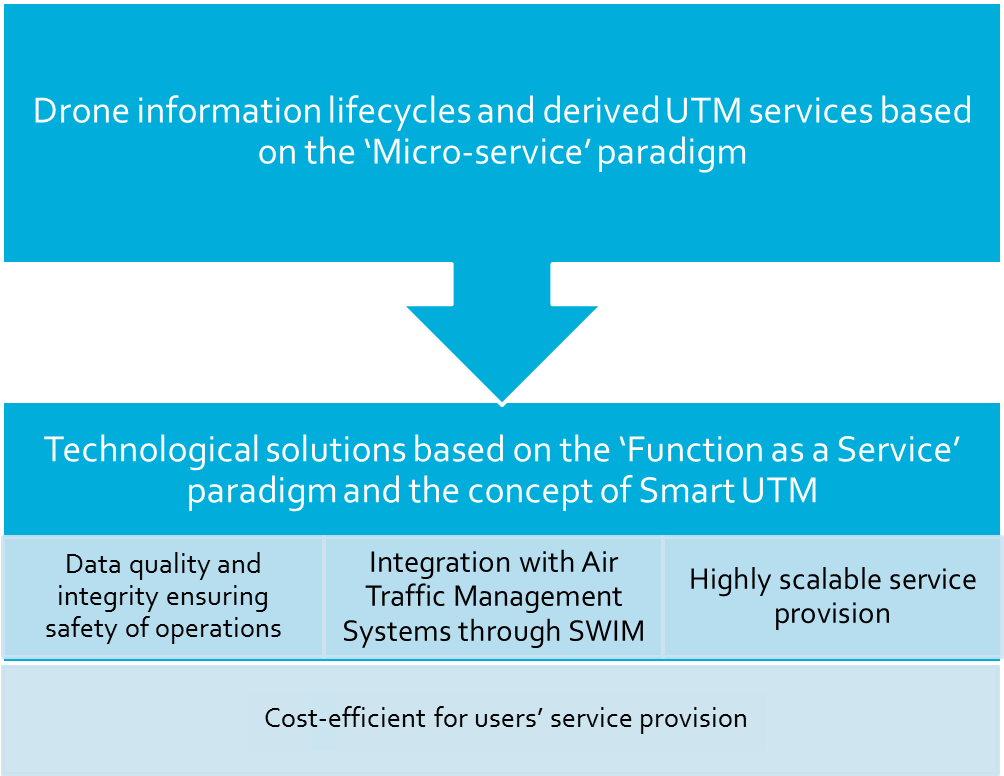
The Challenge
IMPETUS will advance the state of the art in two main areas:
1. Drone information lifecycle that best supports the flight lifecycle, with a view to defining a set of U-space services that leverage the data to provide the users with knowledge and wisdom, which will ultimately lead to safe and efficient operations.
U-space services will be researched on the basis of the use of the ‘micro-services’ paradigm, aiming at exploring lightweight decoupled services, with a clearly defined functionality (focused on a specific capability) and simple interactions. These micro-services will be also characterized by the fact that they could be leveraged to build a more complex, modular composite service, and by allowing users to leverage information created by other users, e.g. services based on exploiting historical position data and sensor readings from a large number of missions to extract information that may be useful to enhance the safety or efficiency of future missions.
2. Proposal for a technological solution to deliver the U-space services that should be characterized by its scalability to respond to multiple users with diverse business models, its mechanisms to assure the data quality and integrity, and its flexibility to facilitate the integration with manned traffic management systems.
Solution will be researched on the basis of the cloud-based server-less computing, leveraging the ‘Function as a Service (FaaS)’ paradigm, which allows for highly scalable service provision at potentially much lower costs than standard cloud-based deployment.
IMPETUS will also research on the application of the smart concept to the design of the envisioned U-space system. The main driver of this concept is to ensure an optimum management of the U-space system with respect to measurable performance indicators such as costs, safety, security or scalability. This concept will be supported by emerging IT technologies to gather, curate, process and deliver data-driven services, including big data (BD) and Internet of Things (IoT).
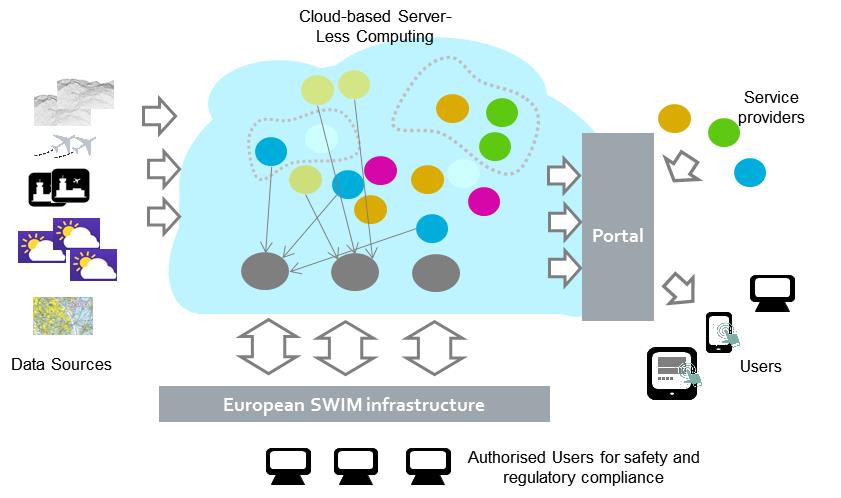
Among other challenges, IMPETUS will look into how these technologies allow fusing data from diverse sources of information on a massive scale to enable quality assurance centralized services to support safety, security and oversight. As an example, drones’ navigation and surveillance will require the integration of ADS-B or radar data with emerging approaches such as sensor-based navigation in GPS-denied environments.
IMPETUS will also research on how the proposed solution can be connected to the European SWIM infrastructure based on B2B services to leverage specific services and functions to authorized users and to take advantage of existing governance mechanism such as registry. This will allow providing solutions to the U-space that go beyond current drone information services which are provided at local level, facilitating additional categorization and standardisation.
The Approach
The IMPETUS approach is based on the analysis and identification of the needs of the future drone operators and service providers in order to define a conceptual model of drone information micro-services as well as a cloud-based architecture which will give answer to the identified needs.
This conceptual model and its selected architecture constitute the IMPETUS Solution fulfilling the requirements in terms of scalability, safety, efficiency and cost-effectiveness of the drone operations. The technical and commercial feasibility of this solution will be demonstrated by means of laboratory-based experimental tests using a prototype of the IMPETUS Solution containing the required functionality to allow the integration of a set of micro-services which jointly provide enough evidence of the fulfilment of project’s objectives.
The project will implement proper mechanisms to use the expertise internal to the consortium and to also ensure the feedback of key stakeholders. These mechanisms will be mainly a set of workshops where information will be obtained related to current and future volume of traffic, drone operations, emerging IT technologies and their applicability to an Smart U-space Concept, and recommendations over the achieved results.
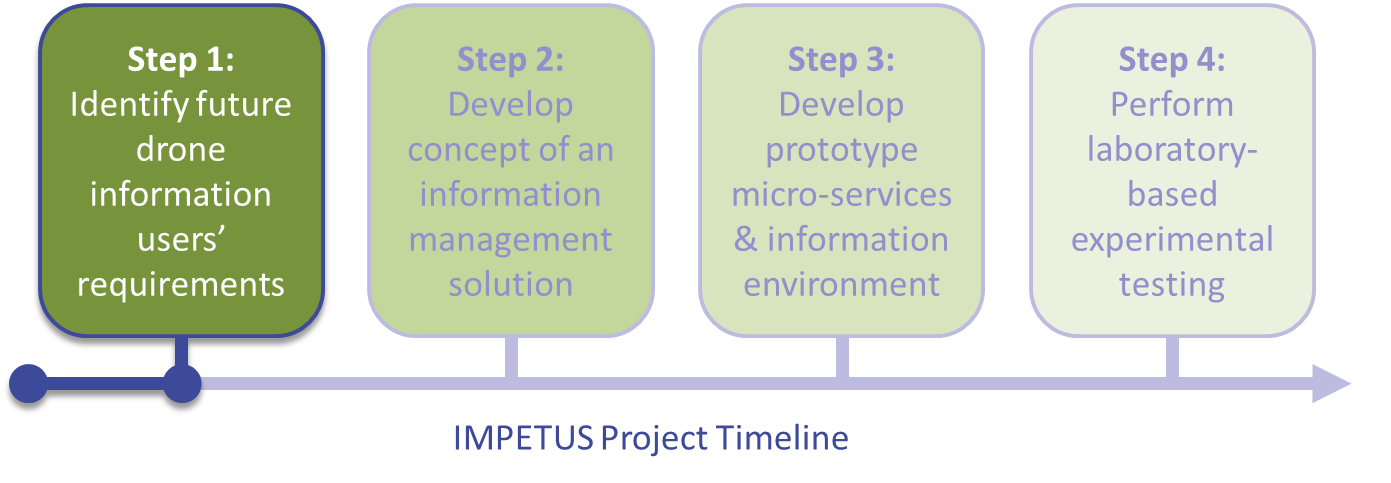
To complement internal knowledge, IMPETUS will consult its Advisory Board which will intervene at several stages of IMPETUS research activities to offer an enriched view of the industry and research community thus ensuring that IMPETUS solution reflects the needs of a wide range of business models and user’s needs.
IMPETUS will also perform a benchmarking with today’s drone information management systems. This will allow not only assessing the expected performance improvements of the future IMPETUS solution in comparison with today’s systems, but also analysing the cost implications within the envisioned market.
The Consortium
IMPETUS consortium is composed of key stakeholders providing complementary views on the current and envisioned drone and ATM information management processes.
